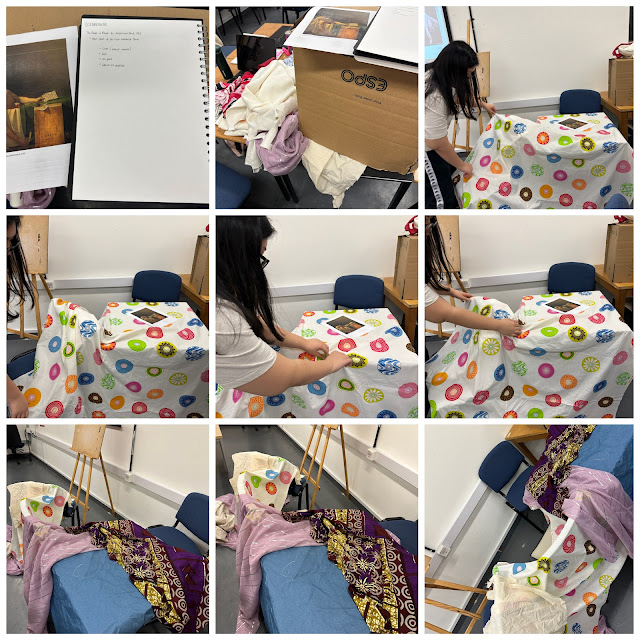Icebreaker: Recreating an Artwork
We began this term with an Icebreaker exercise which was a ‘Recreating an Artwork Challenge’, or the ‘Getty Museum Challenge’. This challenge, original idea created by Instagram user Tussen Kunst & Quarantine, was started by J. Paul Getty Museum as a way to keep people engaged with art during the lockdown. These recreations are done in homes and therefore often have limited resources, which means that people needed to be resourceful and creative with what they have. Barnes (2020) comments ‘You'll be surprised at how faithful these recreations are—especially as people work with limited (and often precious) resources.’ People also have found ways to modernise old artworks, integrating modern messages, items and issues in their recreations.
 |
| Jacques-Louis David, Details from The Death of Marat, Phaidon |
Among the images given, my partner and I chose ‘The Death of Marat’ (1793) by Jacques-Louis David. This artwork depicts on the final moments of French revolutionist Jean-Paul Marat who was found to be assassinated by Charlotte Corday during treatment on his skin condition. This piece has been considered especially revolutionary due to the time it was created; painting a revolutionist during the Reign of Terror and painting him as a martyr was a grand act of defiance and the voice of the people during its time. ‘There is something at once both tender and poignant about this work; in the icy air of that room, on those chilly walls, about that cold and funereal bath, hovers a soul. May we have your leave, you politicians of all parties, and you too, wild liberals of 1845, to give way to emotion before David’s masterpiece? This painting was a gift to a weeping country, and there is nothing dangerous about our tears.’ (White, 2020).
 |
Process Part 3 These were some of the test shots before the final photo. This is the final photo with the finished setup. As we lacked the appropriate lighting, we used flashlights on our phones (with the help of another group, Minji and Sarvar) to give it better lighting. However the lighting was still not strong enough to light the floor to show the fallen hand and glasses (in place of the knife in original work). The black cloth was also not big enough, causing an uneven background. But considering the overall composition, I believe it has good resemblance to the original work. References: Barnes, S. (2020) People Recreate Works of Art With Objects Found at Home During Self-Quarantine, My Modern Met. Available at: https://mymodernmet.com/recreate-art-history-challenge/ (Accessed: 9 January 2023) Gombrich Explains on the Death of Marat [Online Image] Available at: https://www.phaidon.com/agenda/art/articles/2014/december/01/gombrich-explains-the-death-of-marat/ (Accessed: 10 January 2023) White, K. (2020) ‘The Death of Marat’ Defined the French Revolution. Here Are 3 Things You Might Not Know About Jacques Louis David’s Masterpiece, Artnet News. Available at: https://news.artnet.com/art-world/jacques-louis-david-death-of-marat-3-facts-1894240 (Accessed: 9 January 2023) |






Excellent post! Well done. You both did really well and seemed to work together well, supporting each other and coming up with ideas that pushed you recreation along. Good commentary too, with very well done use of quotes. Keep it up!
ReplyDelete